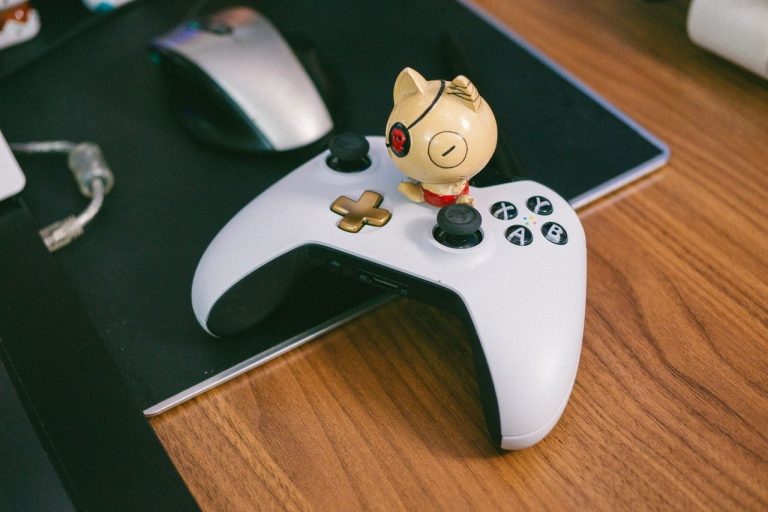How to Aim like a Pro in VALORANT?
Introduction
Few games have captured the hearts and minds of players like Valorant. But what really separates the amateurs from the professionals? Aim. But, how do pros perfect their aim in such a dynamic game? Journey with me as I unlock the world of professional aiming in Valorant, and perhaps, with some insights and dedication, you too can become a pro.
The Foundations of Aiming in FPS
Long before Valorant took the center stage, aiming has been the bedrock of countless FPS games. From the fast-paced arenas of Quake to the strategic landscapes of Counter-Strike, one principle remained consistent: good aim can make or break your game. In Valorant, this tenet is magnified tenfold. The very basics, such as crosshair placement, dictate whether you get that satisfying headshot or miss entirely. Crosshair placement is not just about aiming at head level; it’s about predicting enemy movement, understanding map layout, and often, just raw intuition born out of hours of gameplay.
The Importance of Sensitivity Settings
If aiming is an art, then sensitivity is the brush with which players paint their masterpieces. DPI (Dots Per Inch), in-game sensitivity, and eDPI (effective DPI) are terms often thrown around, but what do they really mean? In simple terms, they determine how much your cursor moves in relation to your mouse’s physical movement. It’s a delicate balance; too high and you might overshoot, too low and you could be caught off-guard. Many pros have tinkered hours, adjusting these settings to a near-obsessive level. It’s not about finding a one-size-fits-all setting, but discovering what feels right for you. Remember, Valorant is a game of milliseconds, and sometimes, that perfect sensitivity can make all the difference.
Advanced Aiming Techniques
Aiming goes beyond just pointing and shooting. Pros utilize a plethora of advanced techniques to get the upper hand. Flicking, for example, is when a player quickly moves their crosshair to a target and fires in one swift motion. Then there’s tracking, maintaining the crosshair on a moving target, essential when battling agile agents. And who could forget the art of spray control? Those rapid consecutive shots aren’t random; they’re calculated. Different weapons in Valorant have unique spray patterns, and understanding them is crucial. A Vandal behaves differently from a Phantom, and mastering each nuance is what sets the pros apart.
Training Regimens of Pro Players
While natural talent can play a part, there’s no substitute for hard work and dedication. Pro players and players who offer Valorant boosting services, often subject themselves to rigorous training regimens to hone their skills. A typical day might begin with warm-up routines that aren’t just about mindlessly shooting – they’re about focusing on reflexes, crosshair placement, and movement synchronization. The rise of aim trainers, external software designed specifically to improve aiming skills, has also made a splash in the training routines of many pros. Tools like Aim Lab and Kovaak’s FPS Aim Trainer allow players to practice their shots in a controlled environment, isolating specific skills and refining them. But perhaps the most vital aspect of training is consistency. Like any skill, frequent and focused practice is the key to mastery.
Understanding Hitboxes and Damage
Valorant’s intricate design means not all shots are made equal. Understanding hitboxes, the designated areas on characters where bullets register, is paramount. A headshot, with its satisfying “dink” sound, inflicts the maximum damage and is often lethal. But it’s not always the best option, especially when you’re unsure of your shot. The trade-off between going for a headshot and landing consistent body shots is a decision players make in split seconds. Additionally, armor in Valorant plays a vital role. It acts as a buffer, absorbing a portion of the damage taken. A pro not only memorizes the damage values of each weapon but also quickly calculates the number of shots needed to secure a kill, factoring in armor.
Mental Aspects of Aiming
Gunplay isn’t solely a physical skill; there’s a vast mental component to it. Players often find themselves in high-pressure situations, whether it’s a 1v1 clutch or the final round of a tiebreaker. Handling pressure is as much a skill as landing headshots. Another mental trap players fall into is “tilt” – a state of emotional frustration that can severely hamper performance. Pros develop strategies to overcome tilt, such as taking short breaks or practicing mindfulness. The ability to maintain focus, stay calm under pressure, and mentally reset after setbacks is often what differentiates a good player from a great one.
Conclusion
Mastering aiming in Valorant is a journey, one that’s paved with dedication, insight, and continuous learning. As we’ve seen, it’s not just about physical skill but also understanding game mechanics, mental fortitude, and relentless practice. Whether you’re an aspiring pro or a casual gamer, there’s always room for improvement. Embrace the process, cherish the small victories, and remember: every pro was once an amateur. The difference? A relentless pursuit of mastery.

Hello! My name is Lucas, and I am the creator of ursuperb.com. I’ve been writing about technology for almost 10 years now, and I love talking about tech news, reviews, and tutorials. I’m currently living in San Francisco, CA, and I’ve been blogging professionally since 2012. I love what I do, and I really enjoy interacting with people online. I believe in creating positive change for humanity, and I try to inspire others to do the same. You can read more about me here.
My favorite thing about Ursuperb is that I’m able to provide useful information to anyone interested in learning more about technology. No matter what kind of tech you use (computer, smartphone, tablet), you will definitely find something interesting to read on Ursuperb. So, let’s take a look at some of the topics I cover on Ursuperb:
1) How To Build An Online Business With WordPress
2) How To Make Money On YouTube Using AdSense
3) What Is Google Analytics? And Why Should You Use It?
4) How To Make Your Own Website Design Software For Free




